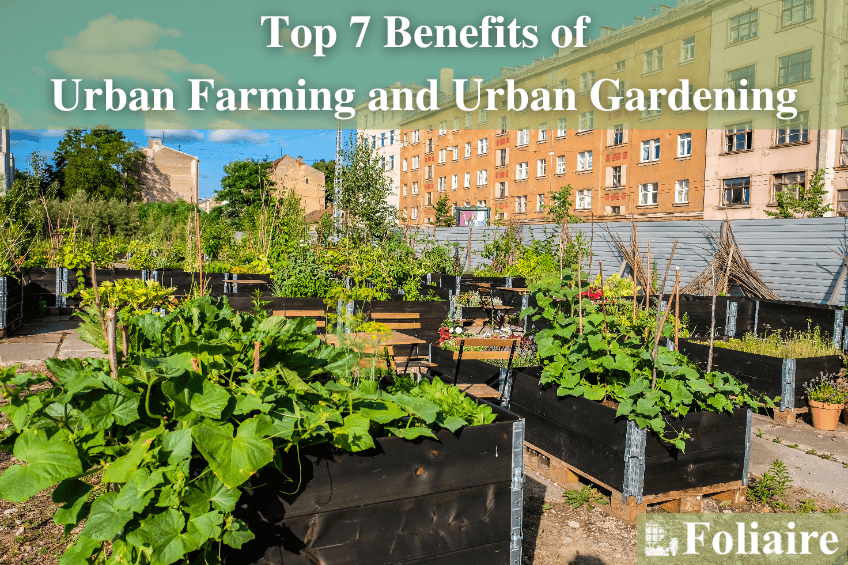The Basic Principles Of City Blooming
The Basic Principles Of City Blooming
Blog Article
Not known Facts About City Blooming
Table of ContentsExamine This Report about City BloomingMore About City BloomingCity Blooming Can Be Fun For AnyoneAn Unbiased View of City Blooming4 Simple Techniques For City Blooming
Intrigued in expanding food up for sale in the City of Chicago? Thinking regarding beginning a community yard? Changes to the Chicago Zoning Regulation enable farming usages like community gardens and urban farms in several components of the city. Below is a checklist of often asked concerns regarding the policies and guidelines that growers need to take into consideration when planning an urban agriculture job.
The zoning amendment does not modify any kind of various other codes managing composting, building permits, buying or renting City owned residential or commercial property, service licenses or environmental contamination. There are existing codes that control these problems and they stay in complete effect and may be suitable to your job. Community gardens are typically possessed or taken care of by public entities, public organizations or community-based companies and preserved by volunteers.
Urban ranches grow food that is meant to be marketed, either on a nonprofit or for-profit basis. Due to their business purpose, city ranches require an organization certificate.
City Blooming for Dummies
Composting is enabled but just for plant material that is produced and utilized on site. The quantity of compost product can not surpass 25 cubic lawns at any kind of offered time according to the standards in 7-28-715 of the City's Municipal Code. Yes. Due to the fact that the dirt at most new garden sites needs amending, compost, soil, wood chips, or other materials can be acquired to build or improve the growing area - fruit and vegtables.

If a structure authorization is required then the hoophouse will certainly be considered an accessory building. You can discover more regarding the structure permit demands by contacting the Division of Structures. The 25,000-square-foot dimension restriction is planned to stop a solitary area yard from dominating an offered block or taking away from the block's existing property or industrial character.
The limitation does not apply to yards located in Public Open Space (POS) districts. Can there be greater than one area yard that is 25,000 square feet on a solitary block? Yes. The dimension limit relates to specific gardens, not to private blocks. No. Fence is not called for, nonetheless, yards that have big car parking areas might be needed to set up fence or other landscaping functions.
The Of City Blooming
B1 & B2 districts need that all commercial use tasks be performed inside. Is fence needed for city farms? Fences might be called for, along with landscaping and testing, for particular auto parking locations and exterior job or storage areas depending on location and the specific task taking place.
Urban ranches call for structure permits and zoning approvals prior to construction (home and garden). Various other kinds of city review might be needed depending on specific structures, activities, dimension, landscape design, licensing, public health and stormwater management concerns.
Yes. The kind of certificate is determined by what is occurring at the site. The Division of Business Affairs and Consumer Protection can help determine the specific kind of business license that's called for. Yes. Off road car parking is required for many business jobs in Chicago. The required number of vehicle parking rooms is based on the number of employees dealing with website and not the square video footage of the expanding room.
The Ultimate Guide To City Blooming

A metropolitan farm can sell garden compost material generated on website, nevertheless, the operation has to conform with the policies in 7-28-715 of the Chicago Municipal Code. Aquaponic systems useful content are allowed inside on metropolitan ranches in many zoning districts.
Up to 5 hives or swarms of honey bees might be kept as an accessory use. Beekeepers should sign up with the Illinois Department of Agriculture. For more details regarding the recommended zoning modification you may speak to the Division of Real Estate and Economic Development, Bureau of Planning and Zoning at 312.744.8563.
Farming in cities and city areas An urban farm in Chicago. Urban agriculture refers to various practices of growing. https://peatix.com/user/22844047/view, processing, and dispersing food in urban areas. The term additionally puts on the location activities of animal husbandry, tank farming, beekeeping, and cultivation in a metropolitan context. Urban farming is differentiated from peri-urban farming, which occurs in country locations beside suburban areas.
The City Blooming PDFs
, who seek to form social networks established on a common principles of nature and neighborhood holism. These networks can create by means of formal institutional support, becoming incorporated into neighborhood community preparation as a "transition town" movement for lasting city growth.
Some of the initial evidence of urban farming comes from Mesopotamia.
Report this page